ollie
I’m a permanently beginner-level staker, who cannot ollie, but I’ve been thinking about ollie, and here’s a memo to collect various ideas.
Mark Suciu’s ollie from 2014
It would be good to have a reference ollie. Here’s Mark Suciu from ten years go:
It’s not easy to find a plain ollie in a part, but this one captures one from the side angle. The whole thing takes place in the first 3s of the clip, and the actual Ollie probably in a second.
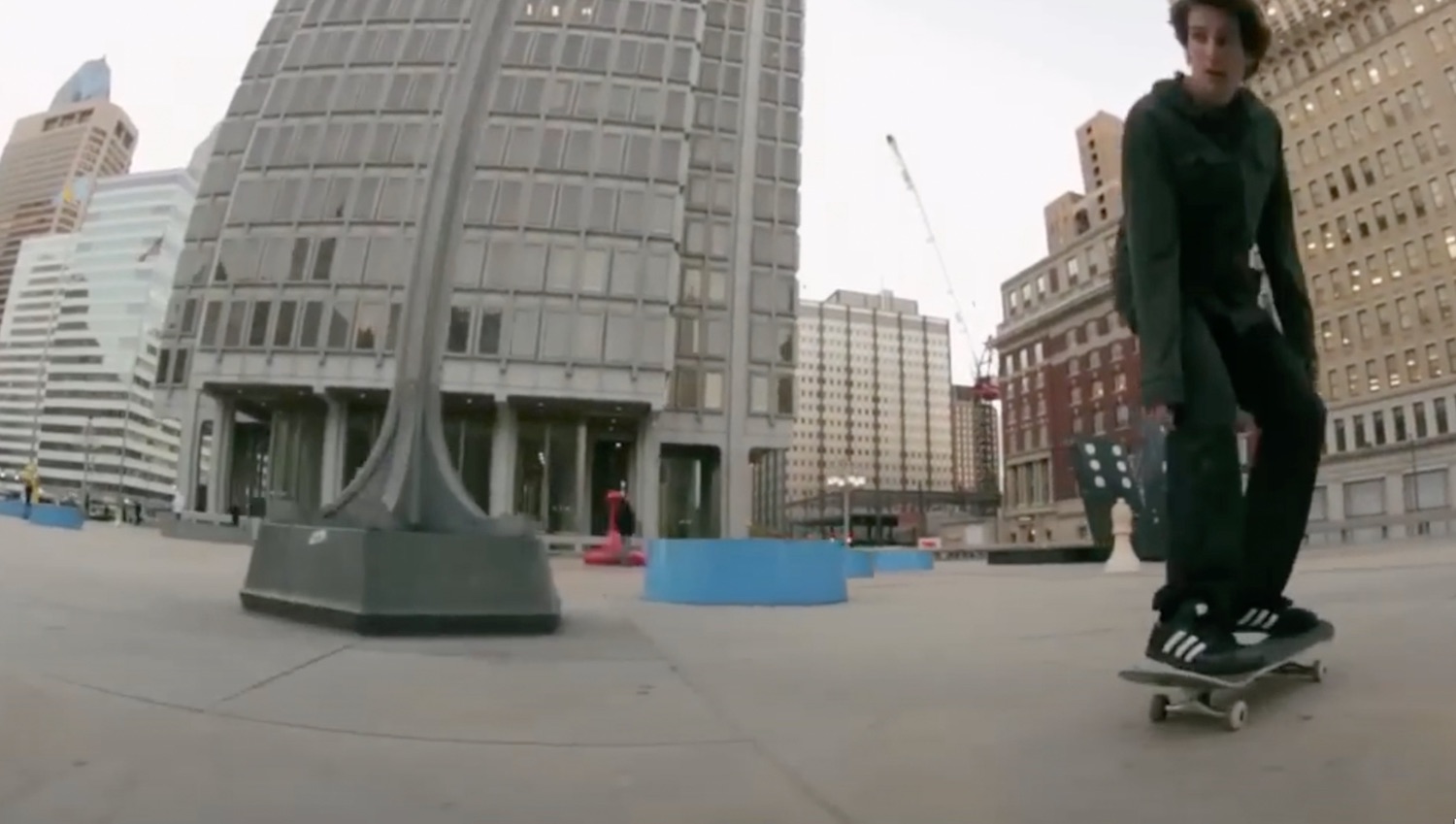
Phase 1. As Mark rides in, arms are straight down, and shoulders are parallel to the board. Head looking towards the heading. Stance-wise, the front foot looks slightly out-toed right behind the front bolts, and the back foot is on the toe, and out-toed 45 degrees.

Phase 2. As he approaches the obstacle, he drops his hips like he’s about to squat into a chair while the upper body staying upright.
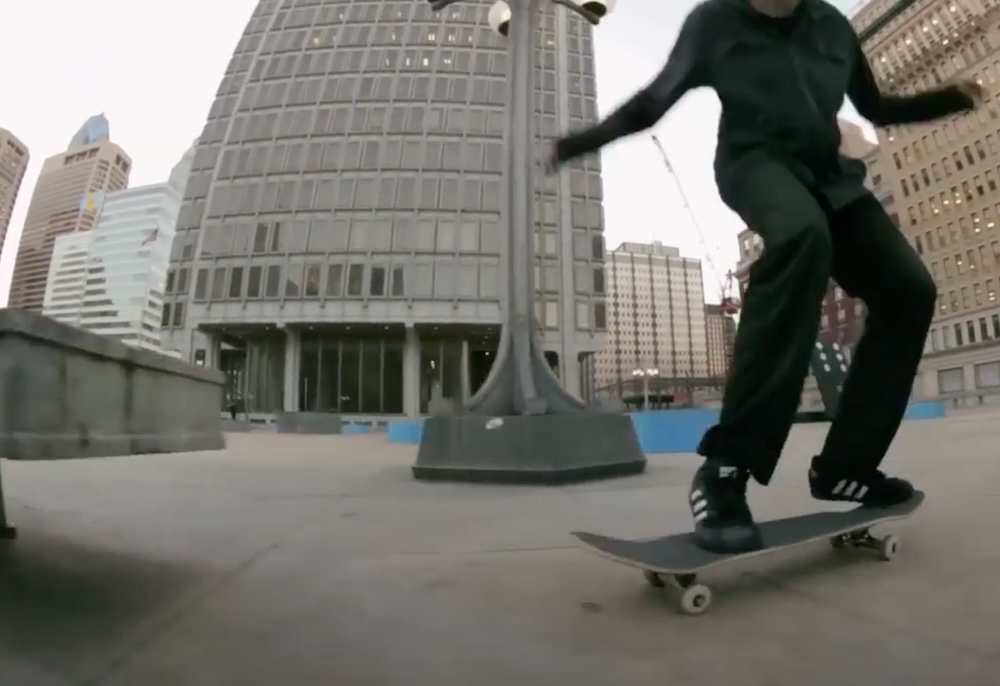
Phase 3. Then he immediately he gets up from the imaginary chair. Front foot also on his toe as well. Arms are coming up, and likely there’s little weight on the board. We’re probably 0.5 second in.
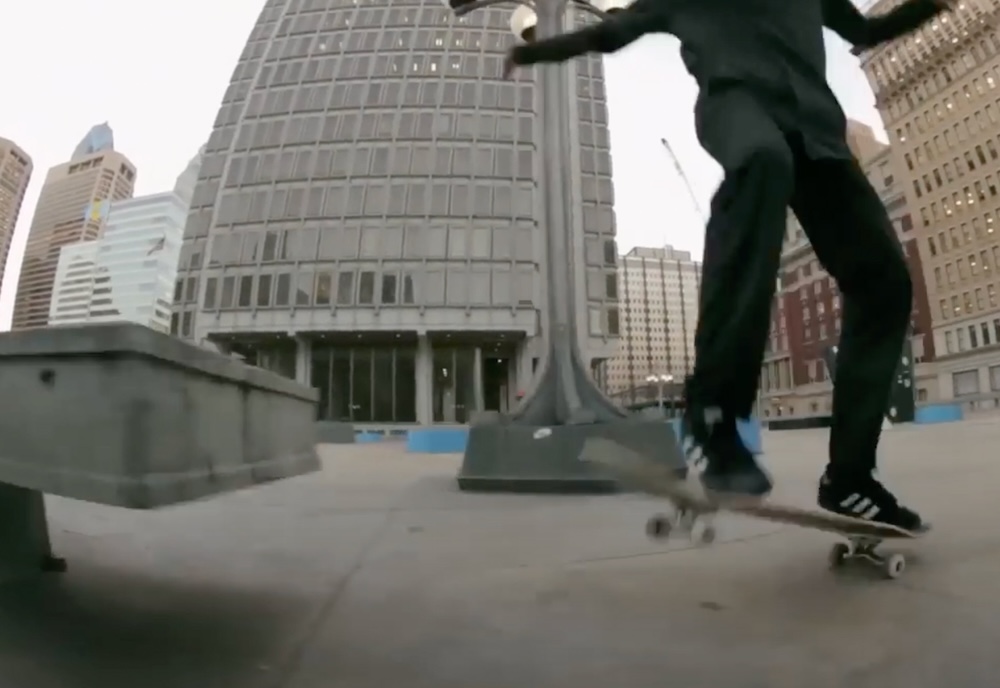
Phase 4. Continueing the upward motion with the upper body, he lifts his front knee up, front foot tilted forward a bit, and starts to extend his back leg to be in tail manual position for a split second. The board is tilted around 15 degrees.

Phase 5. He snaps the back toe to initiate the jump as he bring the knee up and further extend the back leg. This pops the tail, tilting up the board to 45 degrees hitting the side of the front foot around the bolts.
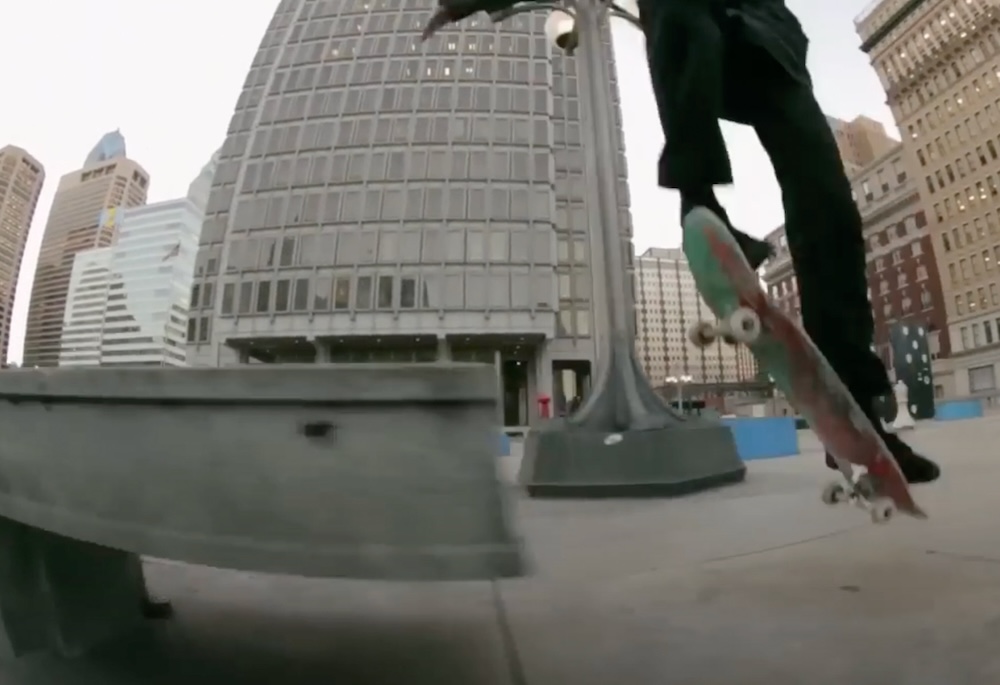
Phase 6. The board keeps tilting to 60 degrees or more, as the side of the front foot slides up to the front pocket. Both Mark and the board are airborne at this point.
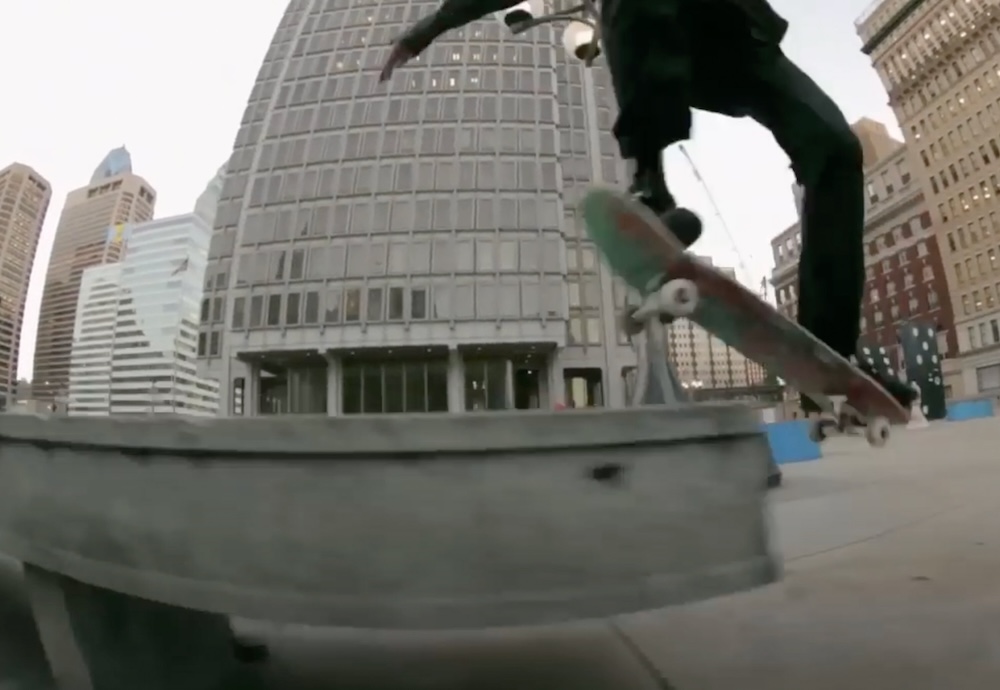
Phase 7. He flicks the front pocket sideways and pulls up the back leg to bring the tail up.
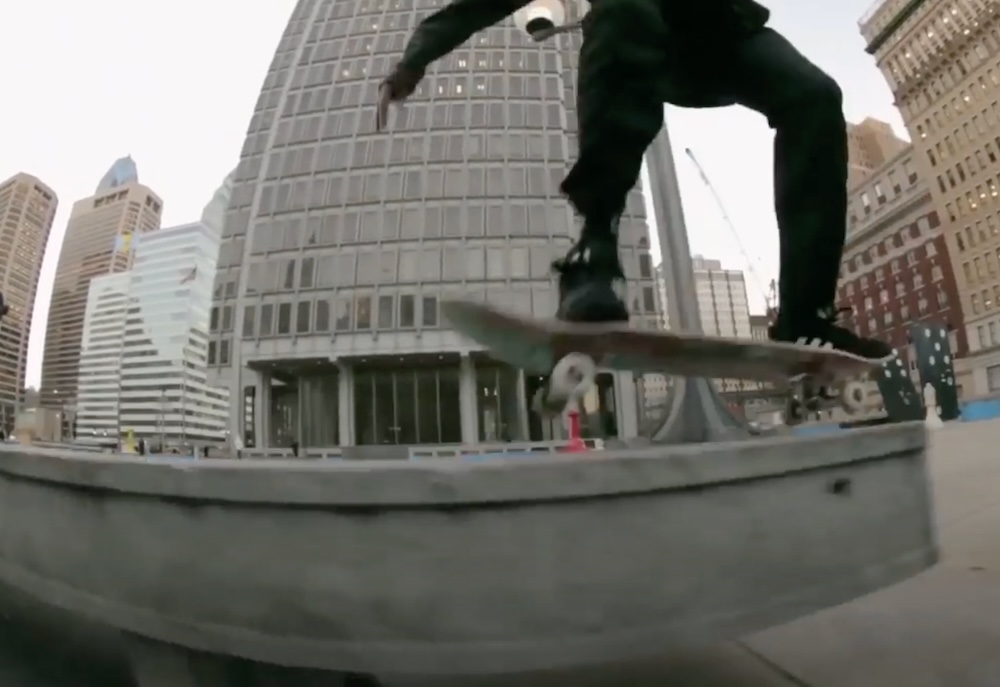
Phase 8. He keeps bringing the back knee up, getting the board to level out midair above the obstacle.
Tyshawn Jones’s ollie from 2023
Here’s a different style of staker, Tyshawn Jones | Paris going over a higher obstracle.
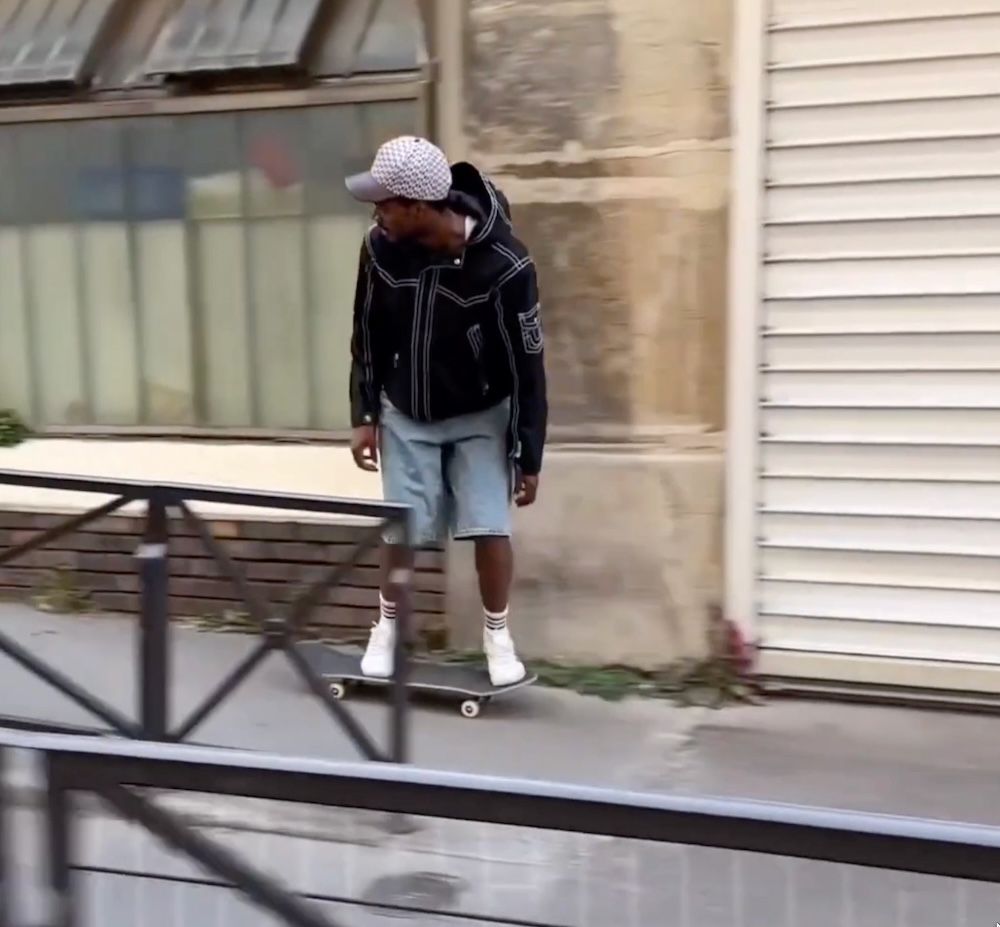
Phase 1. Tyshawn rides in, arms are straight down, and shoulders are parallel, and hovering over to toe side, and head looking towards the heading, like goose. Stance-wise, both feet are square to the board.

Phase 2. Tyshawn folds his knees inward, arms crossed slightly, and bends upper body to the toe side. He holds this position for a split second.

Phase 3. At the right timing, he swings the arms out and jumps upward. Both legs are extended at the same time.
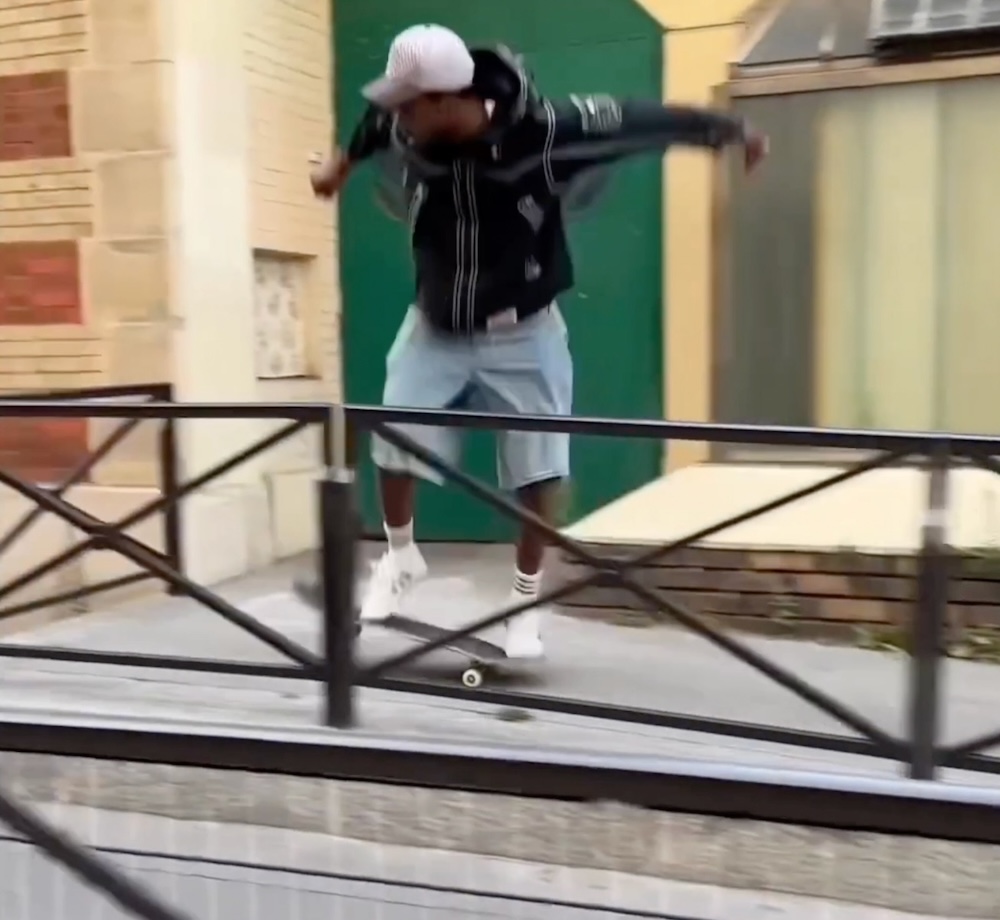
Phase 4. Front knee lifts up and he’s in a tail manual position for a split second.
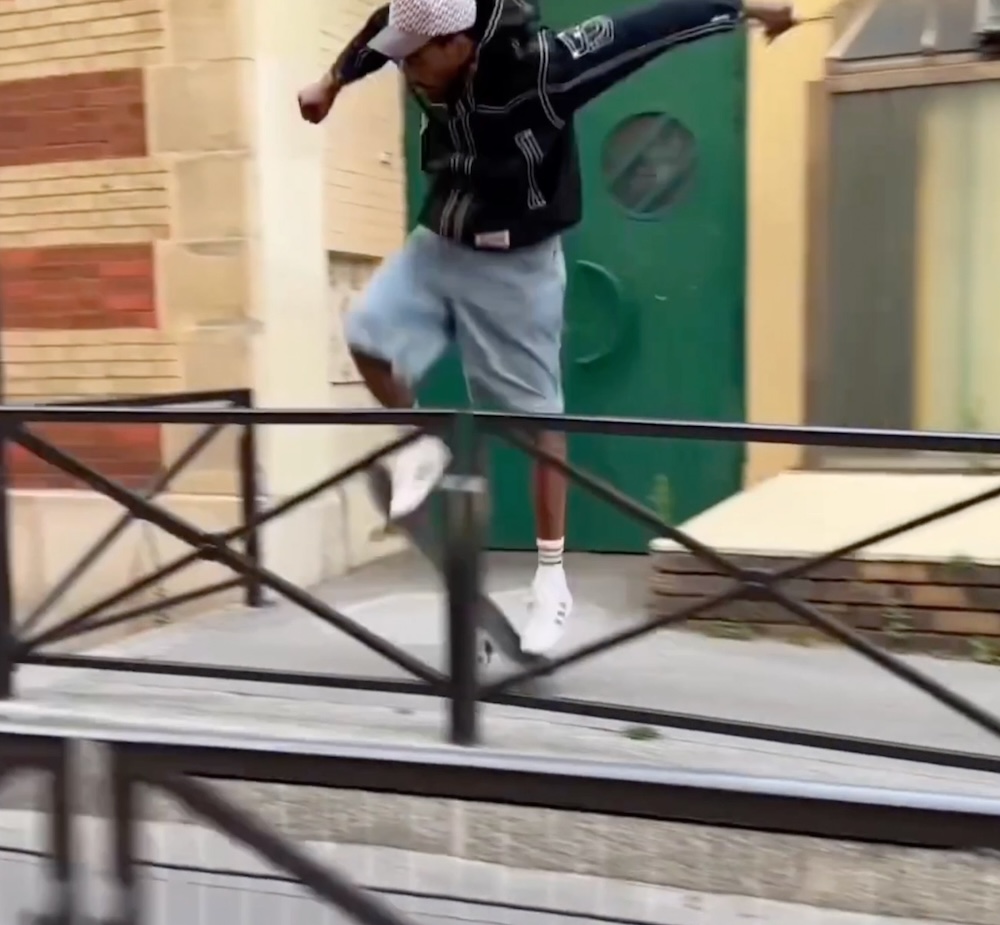
Phase 5. Tail snaps and the board is tilted to 45 degrees, hitting the side of the front foot.
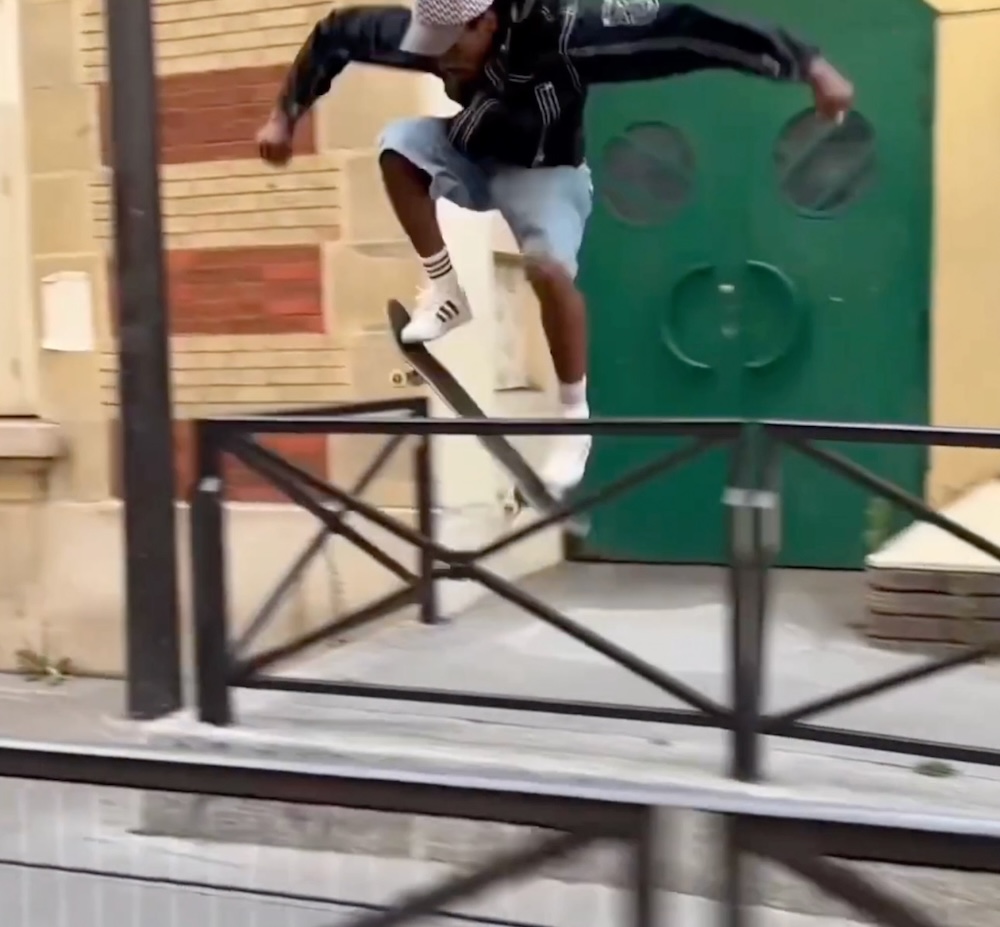
Phase 6. He brings the front knee towards the chest and slides the front foot towards the pocket.
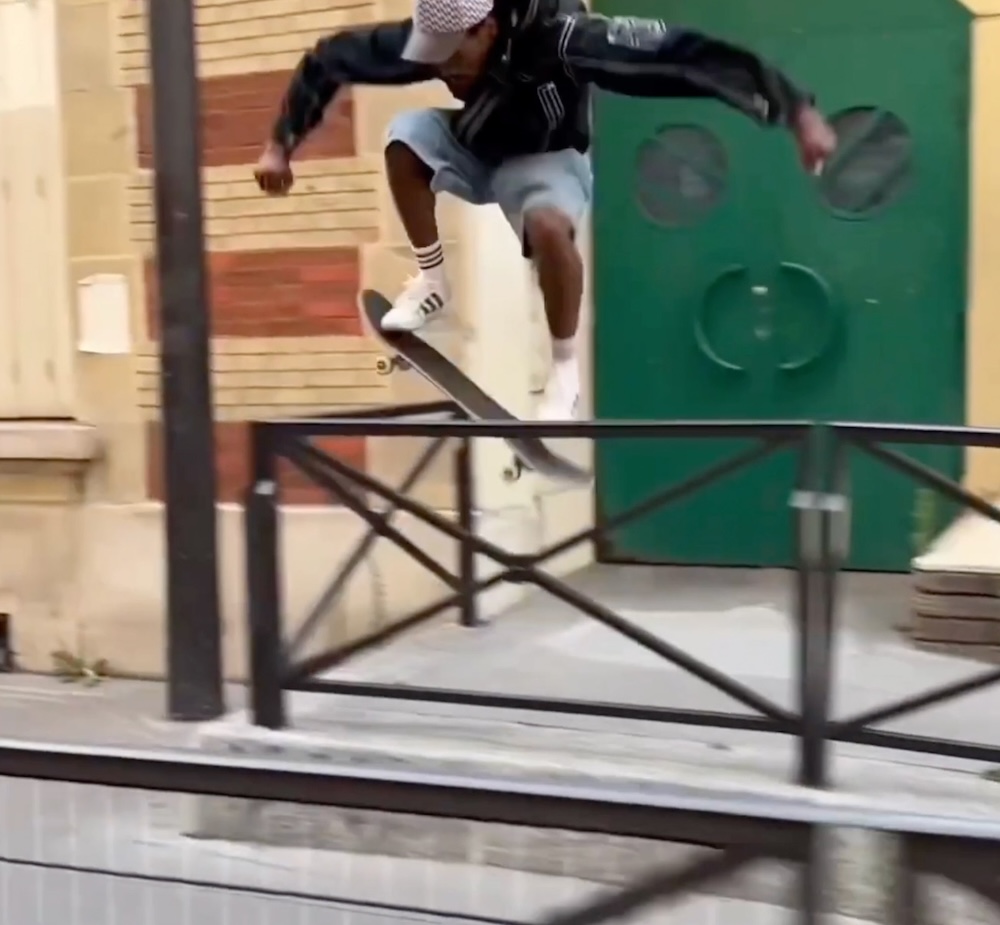
Phase 7. He applies the pressure on the front pocket to bring the tail up.
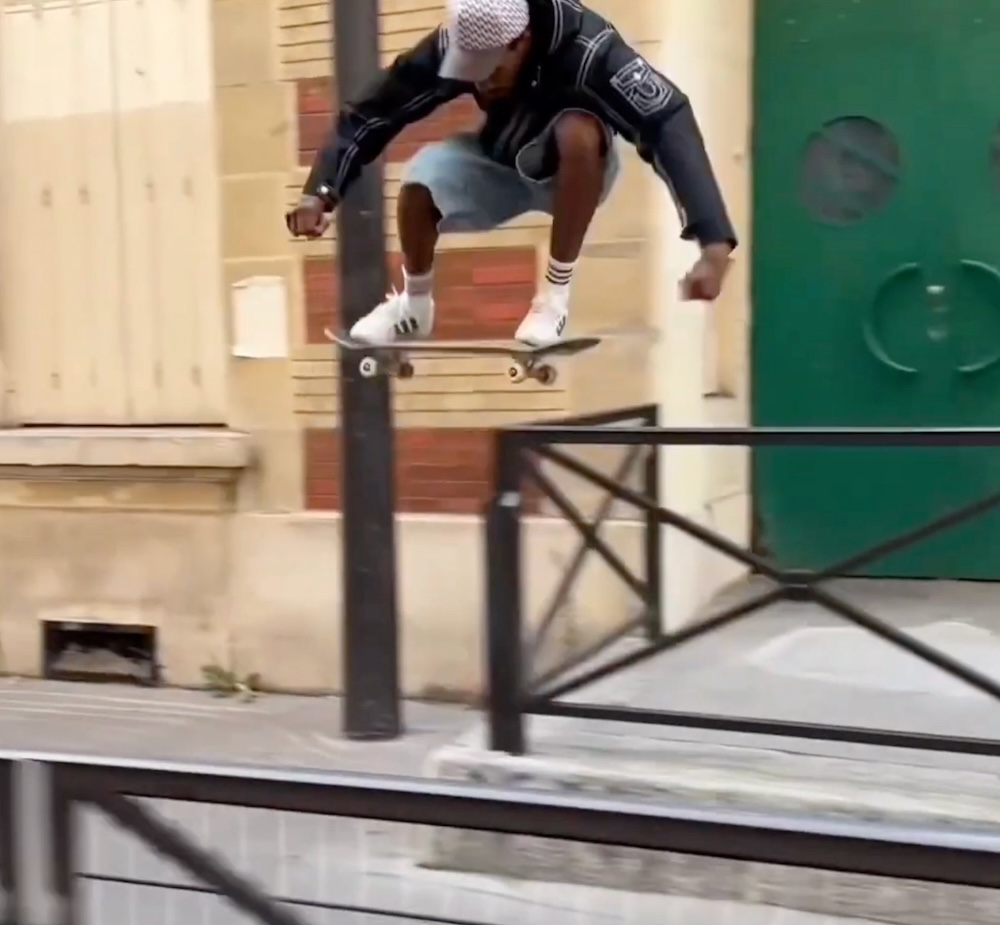
Phase 8. He tucks the back knee towards the chest to level the board.
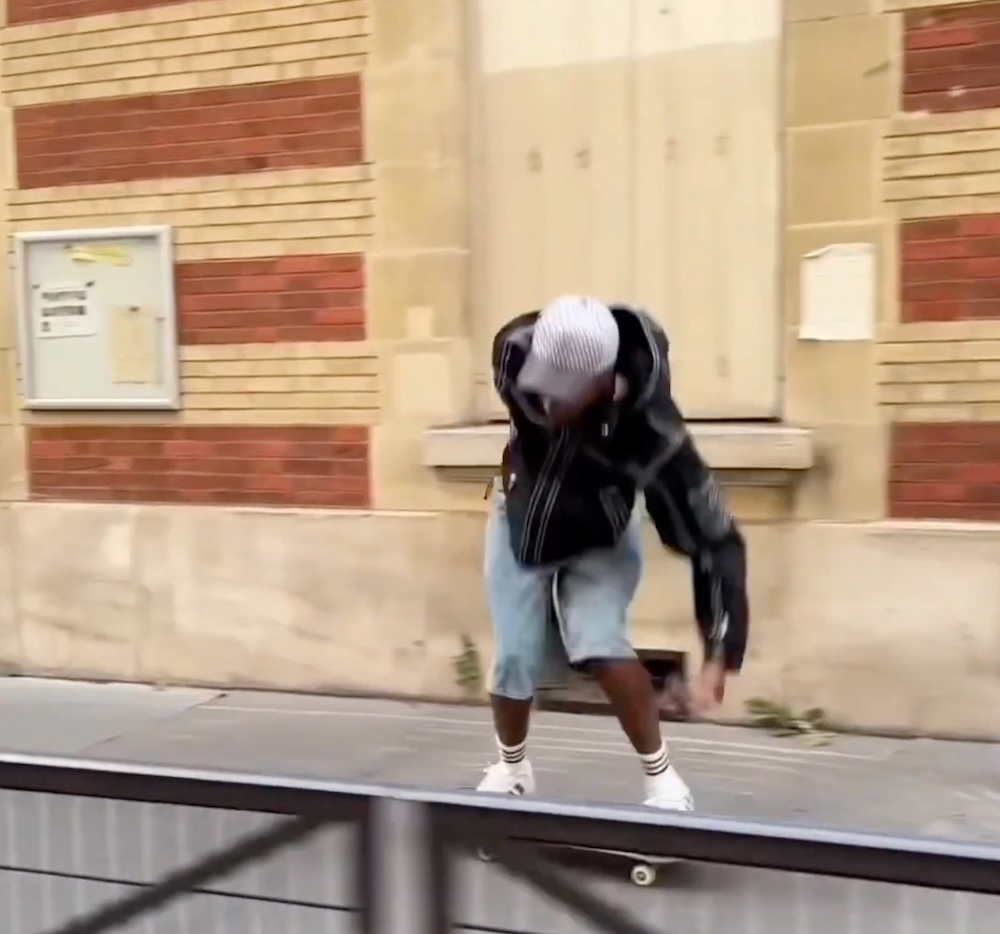
Phase 9. Lands on four wheels.
whythetrick: physics of ollie
Even though skateboarding is an extremely physical, sport in both senses of being related to body and physics, skaterboarders and even instructors often substitute the physics with more prescriptive stance (foot placement), at least in how staking is communicated. In reality, there are range of solutions depending on body weight, muscle strength, height etc. whythetrick is a YouTube channel that tries to analyze stakeboarding from physics and physiological perspective, which I find it to be both useful in learning and debugging tricks.
Physiologically Effective Timing of Ollie (May 2023)
Scientific breakdown of How to Ollie (May 2022)
Why does your Ollie turn? - 5 Reasons your Ollie turns not oNLY shoulders (June 2022)
How to Float Out Ollie from Physics Perspective (August 2024)
All of the videos are pretty good, but there are some common theme in them that are mostly summarized in the Physiologically Effective Timing of Ollie (May 2023). It defines a few terms:
- “jumping”: Lifting the center of gravity from its original position. The feet may not necessarily get off the board. Probably a better term here is unweighting.
- “popping”: Kicking the tail downwards.
- “You need to jump before you pop”

Phase 1. As the staker approaches with the weight distribution 50:50, the body weight pushes the ground downward via front and back wheels, and the ground pushes back with the equal counter force.
Phase 2. As the staker squats, the downward acceleration of the upper body increases the down force. Whythetrick guy doesn’t mention this, but we can also simulate similar down force also by bending the knees slightly and actively pushing into the ground.
Doing either should also increase the upward counter force from the ground, and also I feel like there’s slight energy stored into the deck itself by bowing.
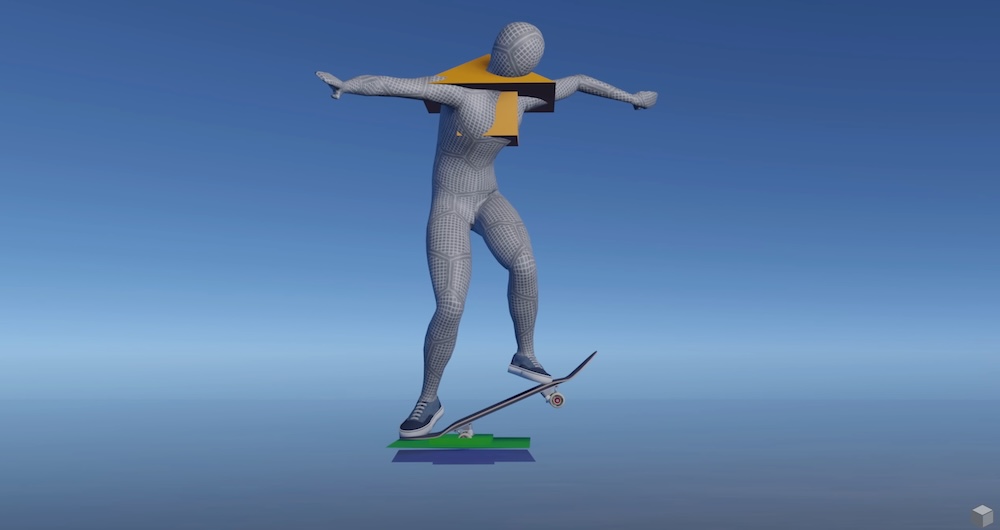
Phase 3. This is where unweighting happens by lifting up body’s center of gravity straight upward, and engaging quadriceps to extend both legs.
Phase 4. Per this model, the tail manual moment happens when the body weight has cleared the board while it’s moving upwards. Also for this to happen at some point, the front knee has to lift up earlier than the back foot.
Phase 5. Whythetrick recommends waiting till the back leg to extend to get the effective pop from the back calf.
For these later phases, How to Float Out Ollie from Physics Perspective (August 2024) covers better.
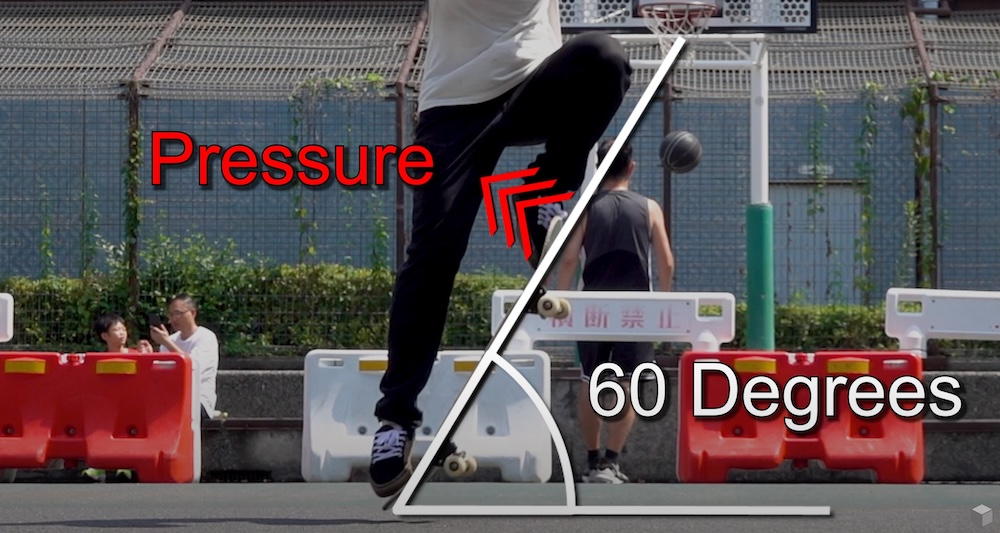
In a textbook ollie, the board presses against the front foot at about 60 degrees. He notes that this is true for those attempting high ollies, but for lower ollie might require actively pushing the front foot forward because the nose doesn’t have enough force to come up.
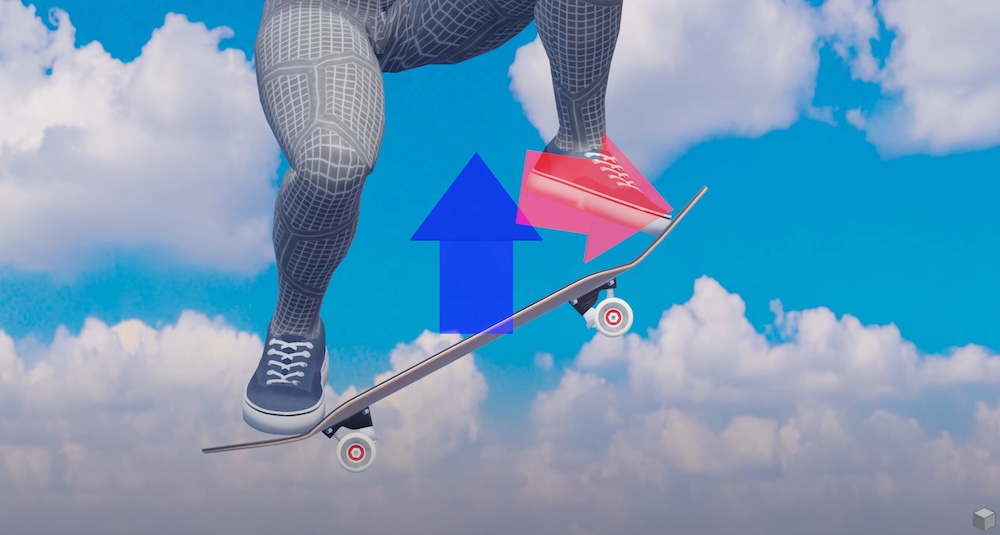
Phase 6 and Phase 7. Whythetrick says “In order to lift the tail, instead of pulling up the nose continuously push it down while the center of the gravity of the board has the force to lift.”
Mitchie Brusco: ‘How to Ollie - The Only Ollie Tutorial You’ll Ever Need’
There are many ollie tutorials out there, and I think this is a uniquely good one as it tries to gradually build towards ollie, while avoid common pitfalls.
Some nice quotes from the beginning part:
When we jump, our back foot never touches the ground. I can’t say that enough. You’re not jumping off of the ground: You are jumping off of the back truck. You are balancing on the board the whole time. And you’re jumping off of the back truck, and lifting your front leg up at the same time.
If you want to hit your tail on the ground, your back foot being on the tail and lifting your front leg will push the tail down.
Here’s from the middle part where Mitchie starts talk about stance:
What we really want to do is have our back foot closer to the truck and feel like we are standing on this back truck. As we lift the nose, I can feel the back truck with my back foot. And this is the spot we’re going to be doing our ollies from, not back here.
Having our back foot closer to the bolts will give you the ability to balance over the back truck while lifting the nose. As you move your foot further off the tail, it becomes harder to balance over the back truck as you lift the nose.
When someone says he has a good pop, that means when they ollie, that their board is coming up at their feet at a high speed. The faster you can get the board to come up at you, the more control you have in the air because you have more pressure against the board, and now you can make adjustments in the air.
This is stark contrast from the traditional ollie tutorials that talks about placing back foot on the edge of the board, and sliding front foot forward. Some observations.
- Bringing the back foot towards the back truck / bolts reduces the downward force of the tail kicking, so this feels counter intuitive. Maybe it kind of makes sense because when you tick/tock keeping the back foot near the pocket is good enough.
- With the back foot not being able to stomp down, I can’t get the tail to touch the ground unless:
- The ground is smooth.
- I unweight both feet.
- Move the front foot closer to the center or preloading some force, or at least feels that way.
The mental model is you push down to load the board and ground with extra force, and if you time the jump and lift the front legs up, the board rotates up initially around the back wheel, and then next around the tail. Similar to pickup, the counter force shifts to tail enough to get the board off the ground. Once midair, front foot is used to change the roration yet again round front pocket to level the board.
Not kicking down at all seems inpractical outside of a pristine skatepark with painted concrete or a basketball court. However, the idea of reducing the kick force and focusing on getting my body to move upward is useful.
other tutorials
Here are other ollie tutorials, some in English others in Japanese:
- Sarah Park-Matott: How to Ollie - A New 5 Step Method
- Sarah Park-Matott: 8 Common Ollie Mistakes
- yewckyTV: How to ollie: floaty ollie (Japanese)
- TTTV: practicing ollie without the footslide (Japanese)
note to learners
A lot of the tutorials make it look easy to do ollie, but it’s not easy for many who started skateboarding later in their life. To put bluntly, it takes hundreds, if not thousands of hours of practice. So don’t get too dishearted if you can’t in a few sessions. Start with tictacs, hippy jump, and pushing around.